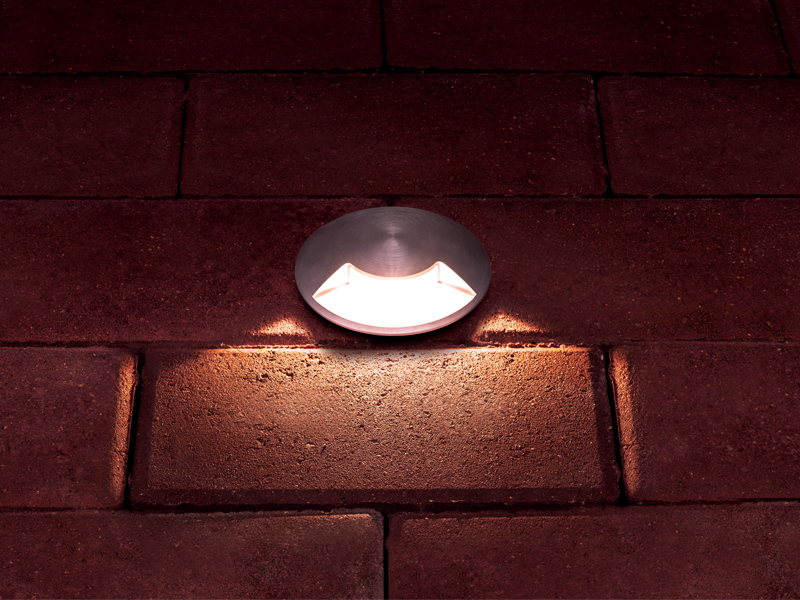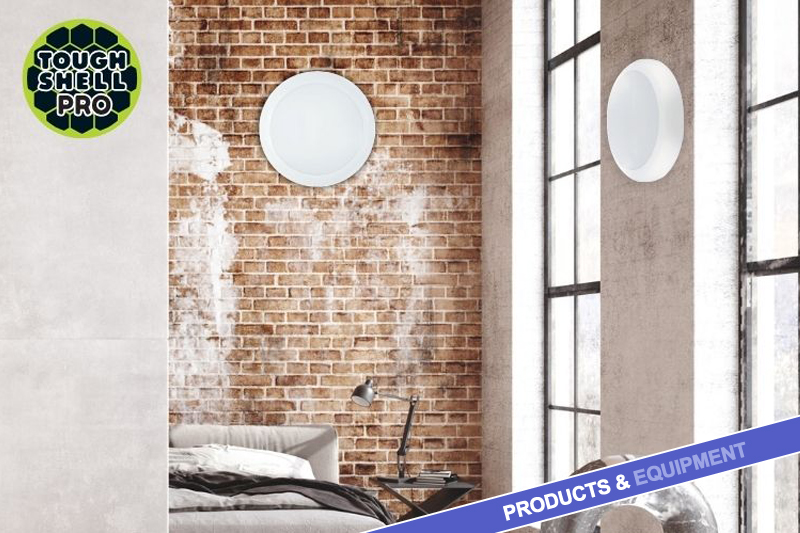The lighting of outdoor spaces has been transformed over recent years thanks to the key benefits that LED has brought over traditional lighting. The relative robustness of solid state lamps compared to their filament predecessors, coupled with their lower running costs, has created a renewed interest in the lighting of gardens.
Lighting manufacturers are producing new generations of LED luminaires for the outdoors to tackle the natural challenges of the climate and further problems encountered by fittings that are located in-ground and have to withstand the corrosive effects of soil and water ingress.
In-ground design tips
A guiding principle in lighting design is to ‘show the effect of the light, not the source’. This is why garden lighting is often kept low at ground level where illumination can have the desired impact without the fixture being visible – especially during the day. These in-ground fixtures are concealed within the fabric of the deck, lawn, path or driveway and, correctly specified and positioned, they can have a dramatic effect on the garden scene.
Trees are magnificent in all seasons and benefit from uplighting into the branches or canopies for a theatrical effect. Lighting from the front produces a flattening effect. Consider the placement of additional in-ground luminaires from the sides to enhance the 3D appearance and backlight for increased drama. Integral’s 10.2W in-ground unit produces 800 Lm – sufficient to illuminate a tall tree.
Whilst the trees, shrubs and ornaments provide the focal points within a garden scheme, other features also have a role. A wall with a rough stone texture or brickwork can be used to frame the view of an outdoor space and help balance the composition of the scene. Here ‘grazing’ or the washing of light across the face of an object is an effective technique which can be created with the use of a series of inground uplighters.
Integral LED’s range of Pathlux Inground Uplighters offer a selection of lumen levels and a choice of beam angles of warm 3000K illumination, which is ideal to pick out the detail in a vertical surface. Locating a line of concealed in-ground luminaires at the base of a wall, hedge or fence that is close enough to spread an interlocking wash of light, adds an important structural element to a garden at night.
Pathways through an outdoor space have an important function of providing safe passage, yet they do fulfil an aesthetic purpose of dividing a garden, often into contrasting areas of planting and also activities like dining or lounging. Again, it is important to keep the lighting at a low level where illumination can direct footfall whilst not detracting from the visual theatre of the main garden scene. Here an inground luminaire can play its part, casting light horizontally across the path surface. Integral’s Pathlux range offers four-way, two-way and single direction lamps designed as a concealed fixture.
Tackling In-ground corrosion
Despite the use of IP67 luminaires, the vulnerability of electrical installations to the inevitable exposure to moisture and water below ground level can dramatically shorten the life expectancy of an installation. The team at Integral has been developing features to prevent the causes of ‘cable suction’, which effectively draws water into the core of the lighting installation. As a LED increases temperature during operation, heated air expands. Prevented access to the sealed luminaire, the air escapes along the connected cable. When the light is switched off, the assembly effectively becomes a small water pump that draws moisture in the air along the cable into the fitting body.
H20 Stop is a device that acts to eliminate this capillary action within a scheme’s electrical cabling and hence minimises the presence of corrosive moisture within an outdoor lighting system. Integral’s new Pathlux Inground series carries the H2O Stop feature throughout the range. Coupled with the additional benefits of solid-state light-sources it is a tool that will preserve the operational lifetime of illuminated gardens.
For more information please visit: https://integral-led.com/





